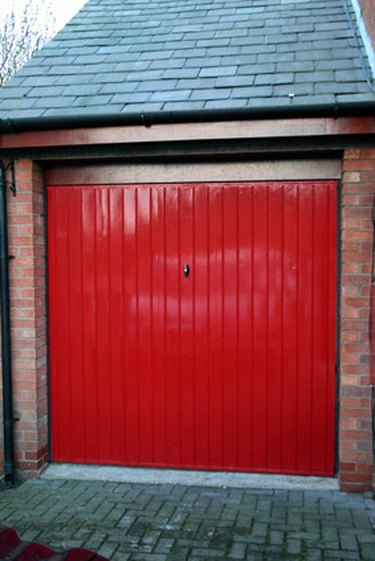
You may want to insulate the ceiling of your garage for a number of reasons. If you have a heated apartment or bedroom above the garage, insulation will prevent the cold garage air from coming up through the floor. Conversely, if you have a heated garage with an unheated attic over it, insulation will help to keep the heat in the garage and will also serve as a sound barrier between the garage and the space above it.
Batts
Video of the Day
One of the easiest ways to insulate the ceiling of your garage is to infill between the joists with batts of fiberglass or rock wool insulation. If your ceiling is unfinished, you can do this from below before attaching drywall to the undersides of the joists. If your ceiling is already finished, batts can be installed from above by laying them in between the joists while standing on the joists in the attic. The ceiling joists in your garage are probably either 16 or 24 inches apart; buy the batt insulation that is the correct size to fit your joists.
Video of the Day
Loose Fill
Loose fill insulation is usually made of cellulose or shredded newspaper that has been treated with boric acid to deter insects. You will need a finished ceiling on the underside of the joists in your garage to use this type of insulation. Because it is loose, it will assume the shape of whatever space you put it into, thereby reducing drafts and making it convenient to install. You just need to climb up into the attic with bags of the stuff and dump it in, pushing it into all corners and gaps. Don't compress cellulose insulation; the looser it is, the more air it will trap and the more effective it is as insulation.
Blown-in Insulation
Blown-in insulation is very similar to cellulose insulation; only its method of application is different. Blown-in insulation is put into place by a truck with a fan mechanism and a wide tube. The insulation is blown through the tube into the spaces that need insulating. Blown-in insulation is frequently used to insulate walls that have already been built in older houses, thus removing the necessity of tearing part of the wall off. Blown-in insulation is not ideal for walls because when it settles it often leaves gaps and spaces. It is, however, ideal for attics and over ceilings because, once it is blown in, it simply remains in place, providing an effective thermal barrier between interior spaces and the cold outdoors.